Environmental and Geotechnical Assessment of the Steel Slags as a Material for Road Structure
Abstract
:1. Introduction
2. Materials and Methods
2.1. Material and Sample Preparation
2.2. Laboratory and Chemical Analysis
2.3. Geotechnical Laboratory Analysis
2.4. Cyclic Loading Tests
3. Results and Discussion
3.1. Chemical and Mineralogical Characterisation of the Slag
| CaO free | SiO2 | TiO2 | Al2O3 | Fe2O3 | MnO | MgO free | Na2O | K2O | P2O5 | SO3 | Cl | F |
|---|---|---|---|---|---|---|---|---|---|---|---|---|
| 27.46 | 16.69 | 0.43 | 6.64 | 33.82 | 3.87 | 6.68 | 0.68 | 0.10 | 0.30 | 0.45 | 0.003 | 2.89 |
| Element | Value | Element | Value |
|---|---|---|---|
| Chromium (Cr) | 2915 | Rubidium (Rb) | 11 |
| Zinc (Zn) | 1084 | Arsenium (As) | 10 |
| Barium (Ba) | 380 | Cadmium (Cd) | 8 |
| Strontium (Sr) | 266 | Uranium (U) | 4 |
| Cupper (Cu) | 175 | Bromine (Br) | 5 |
| Circonio (Zr) | 109 | Cerium (Ce) | <5 |
| Vanadium (V) | 92 | Cobalt (Co) | <5 |
| Niobum (Nb) | 62 | Lanthanum (La) | <5 |
| Lead (Pb) | 59 | Yttirum (Y) | <3 |
| Nickel (Ni) | 26 | Thorium (Th) | <3 |
| Tin (Sn) | 15 | Bismuth (Bi) | <3 |
| Molybdenum (Mo) | 11 | Gallium (Ga) | <3 |
3.2. Bearing Capacity Tests
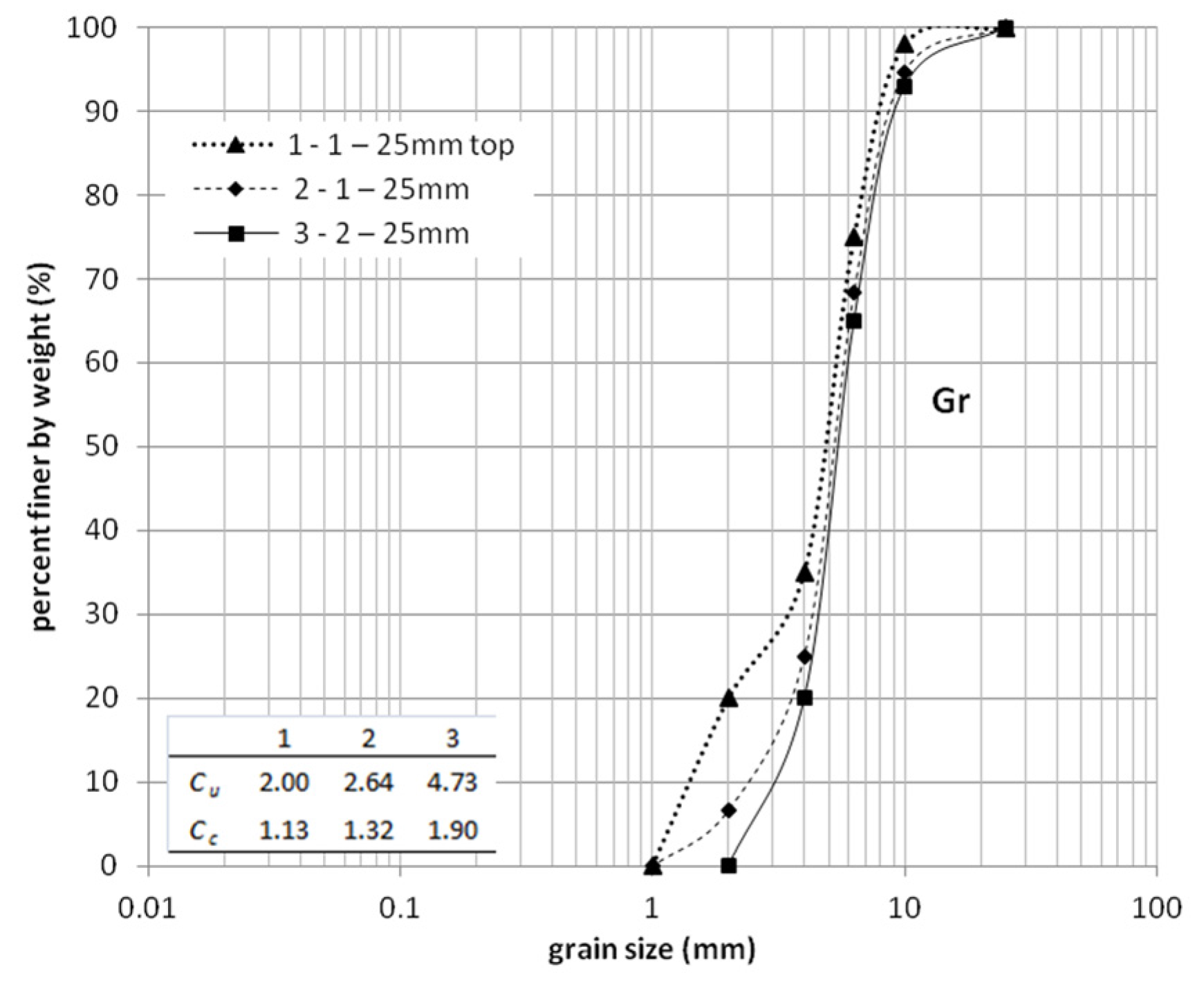
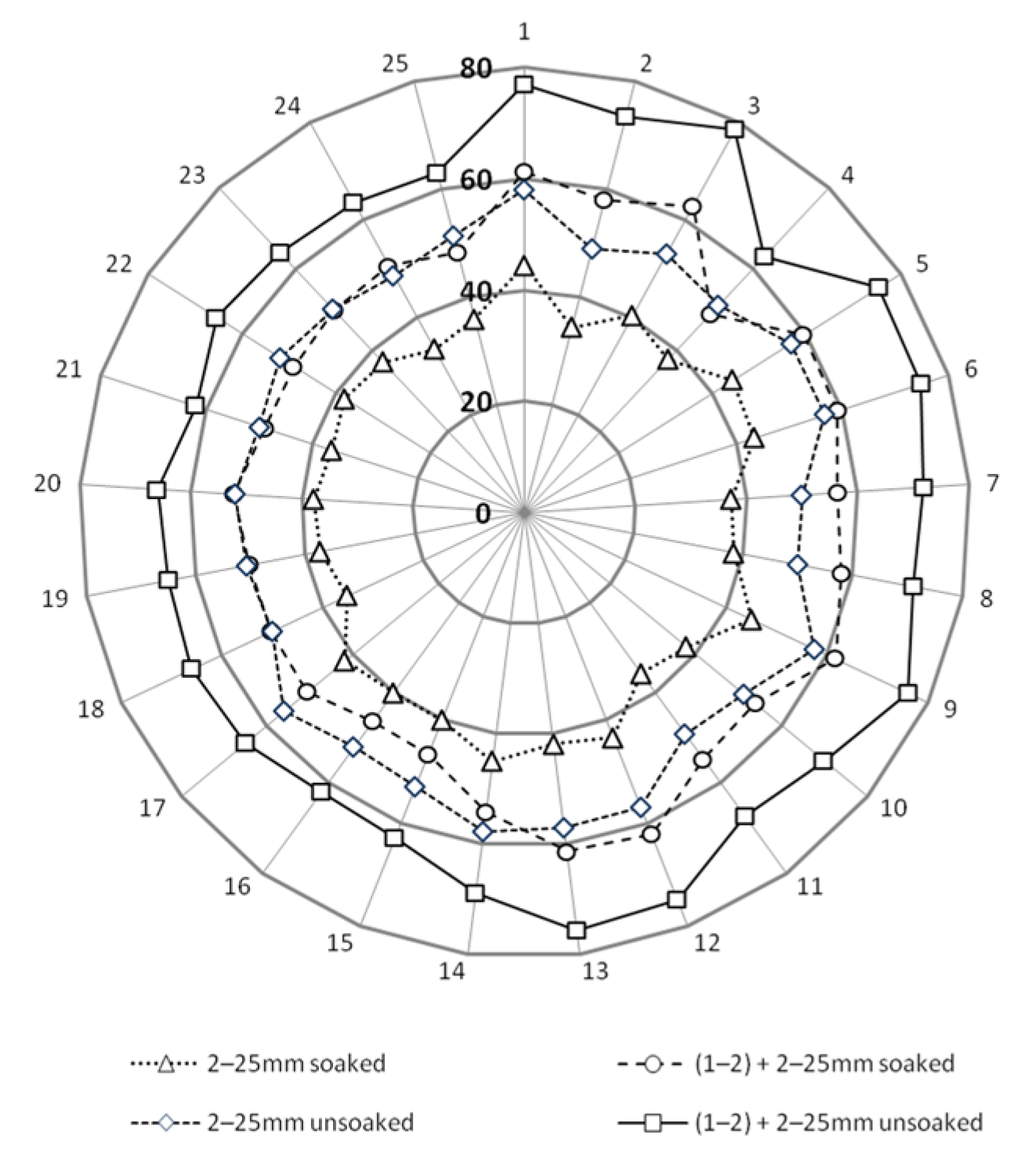
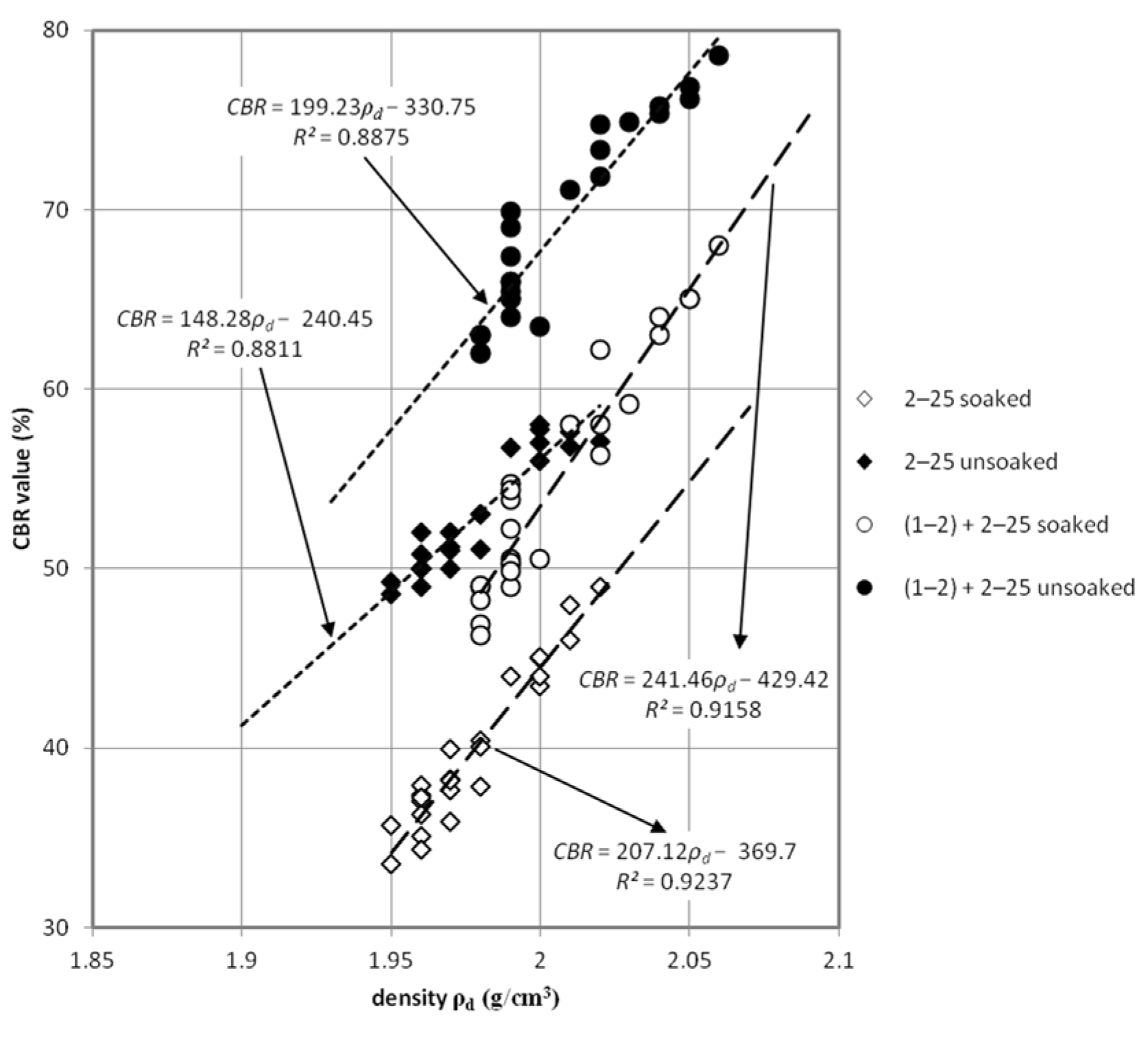
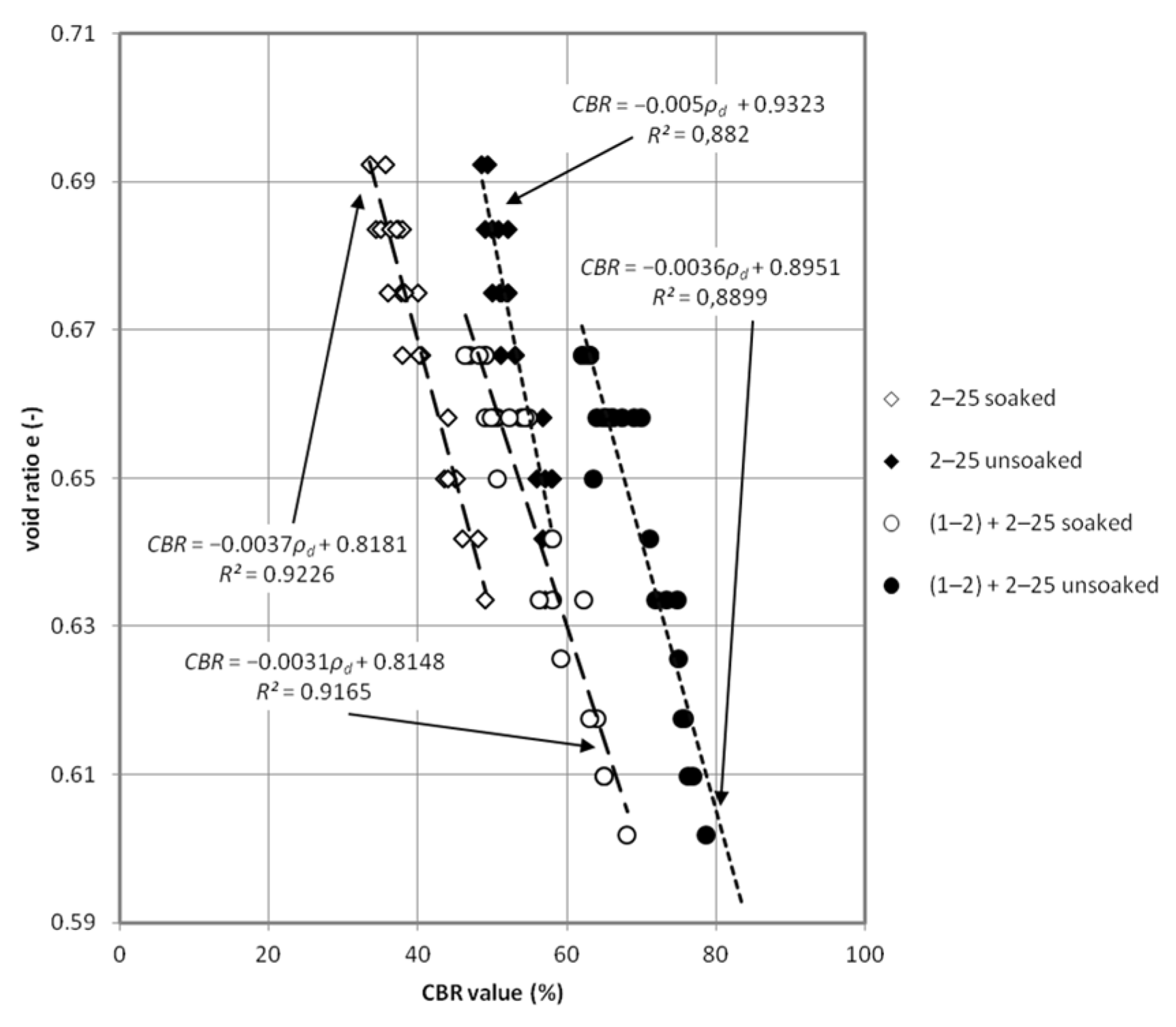
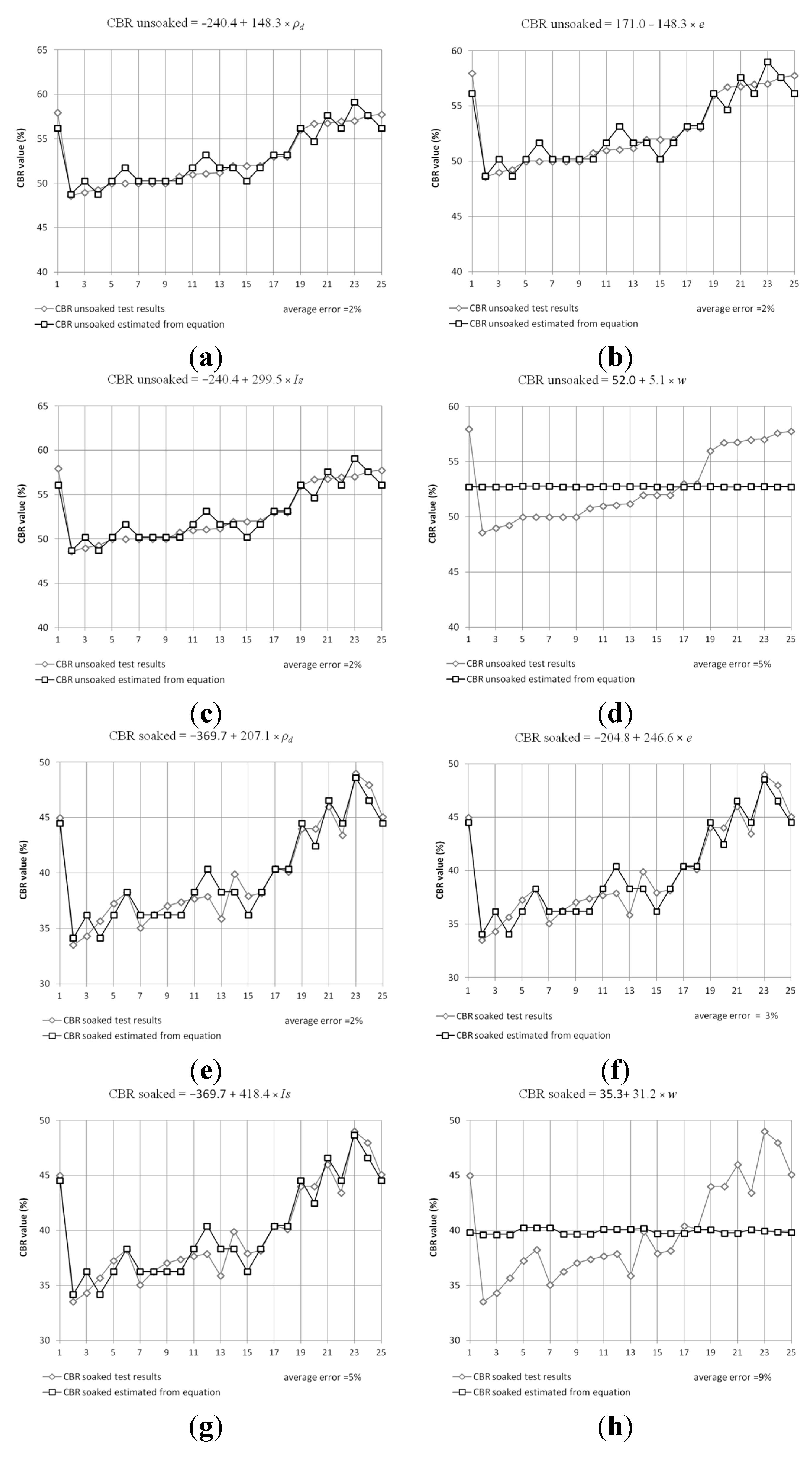
| CBR Test Condition | 2–25 mm Fraction | (1–2) + 2–25 mm Fraction |
|---|---|---|
| CBR unsoaked | 240.4 + 148.3∙ρd | 330.7 + 139.2∙ρd |
| 171.0 − 176.7∙e | 227.3 − 245.5∙e | |
| 52.0 + 5.1∙w | 74.3 + 36.8∙w | |
| 240.4 + 299.5∙Is | 330.7 + 402.4∙Is | |
| CBR soaked | 369.7 + 207.1∙ρd | 429.4 + 241.5∙ρd |
| 204.8 − 207.1∙e | 46.8 − 2297.3∙e | |
| 35.3 + 31.2∙w | 63.6 − 58.6∙w | |
| 369.7 + 418.4∙Is | 429.4 + 487.8∙Is |

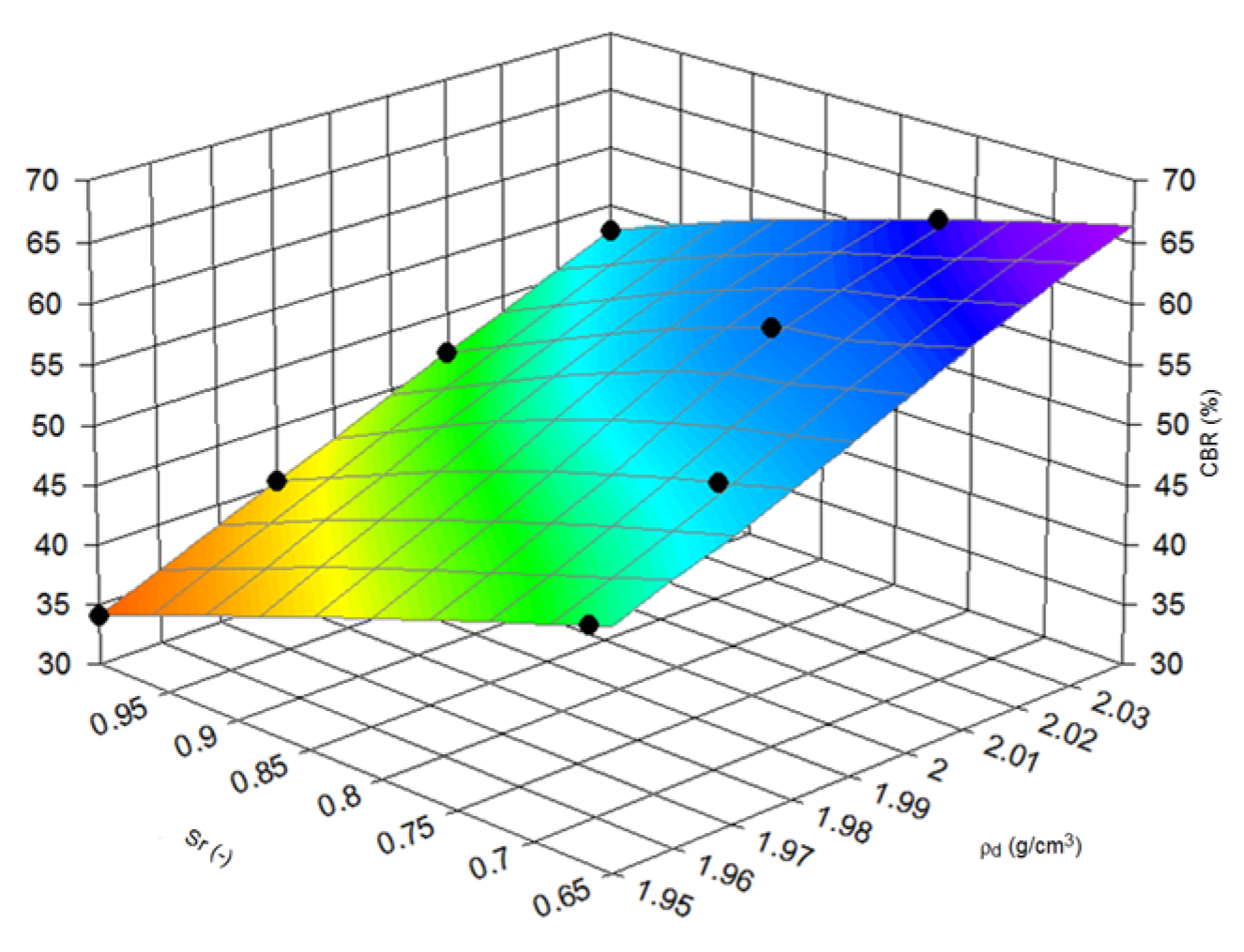
3.3. Cyclic Loading Tests
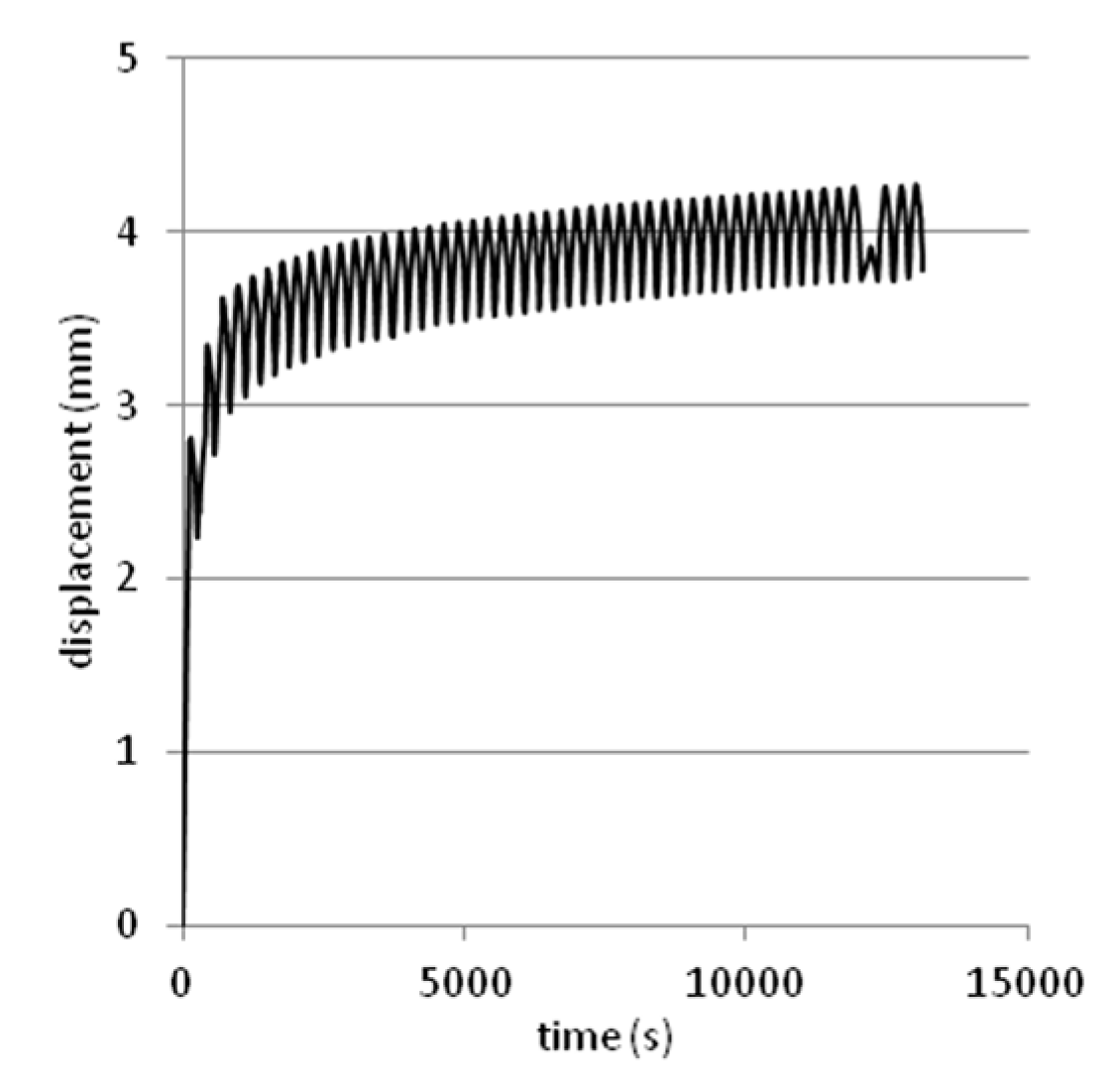
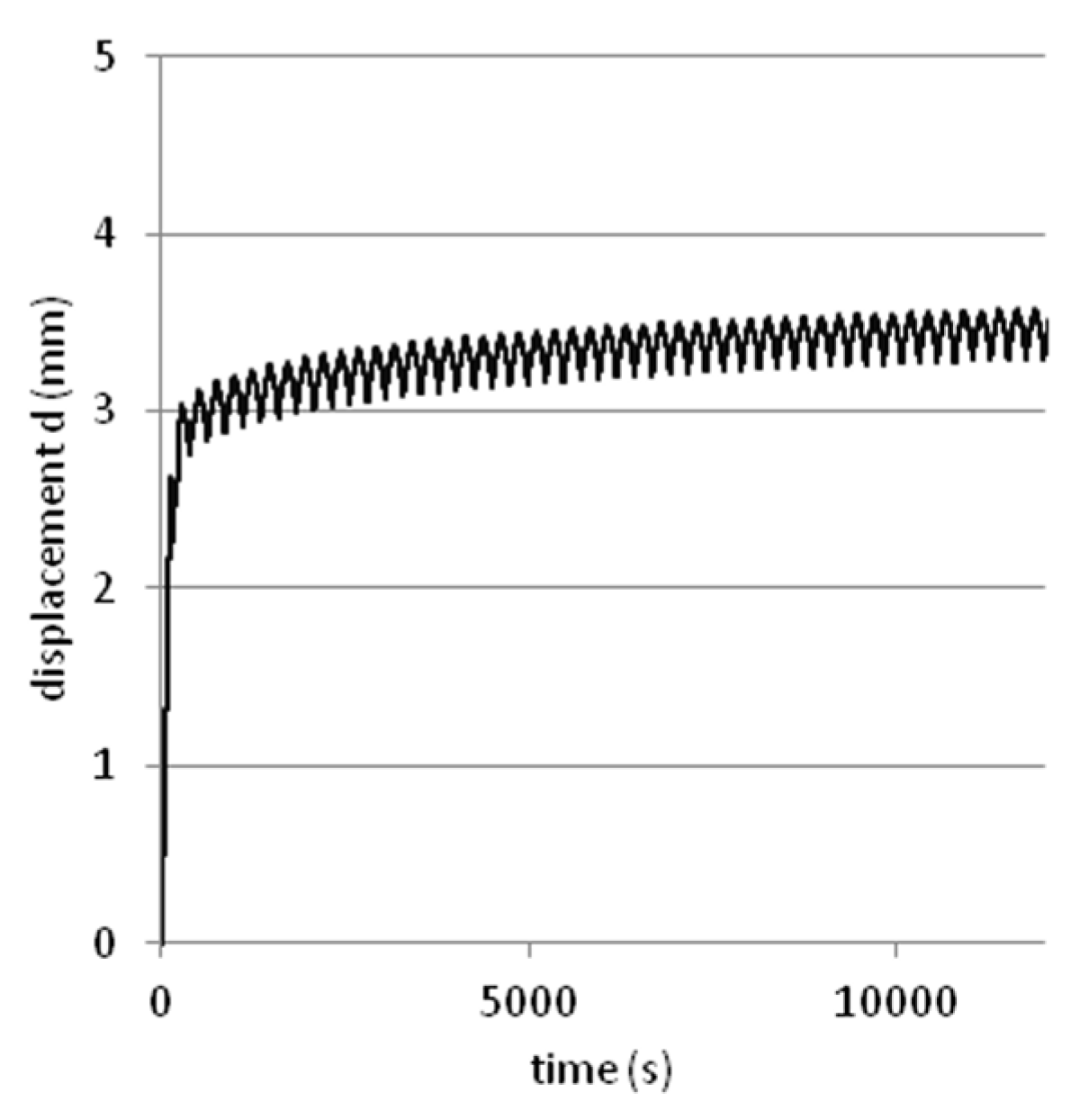
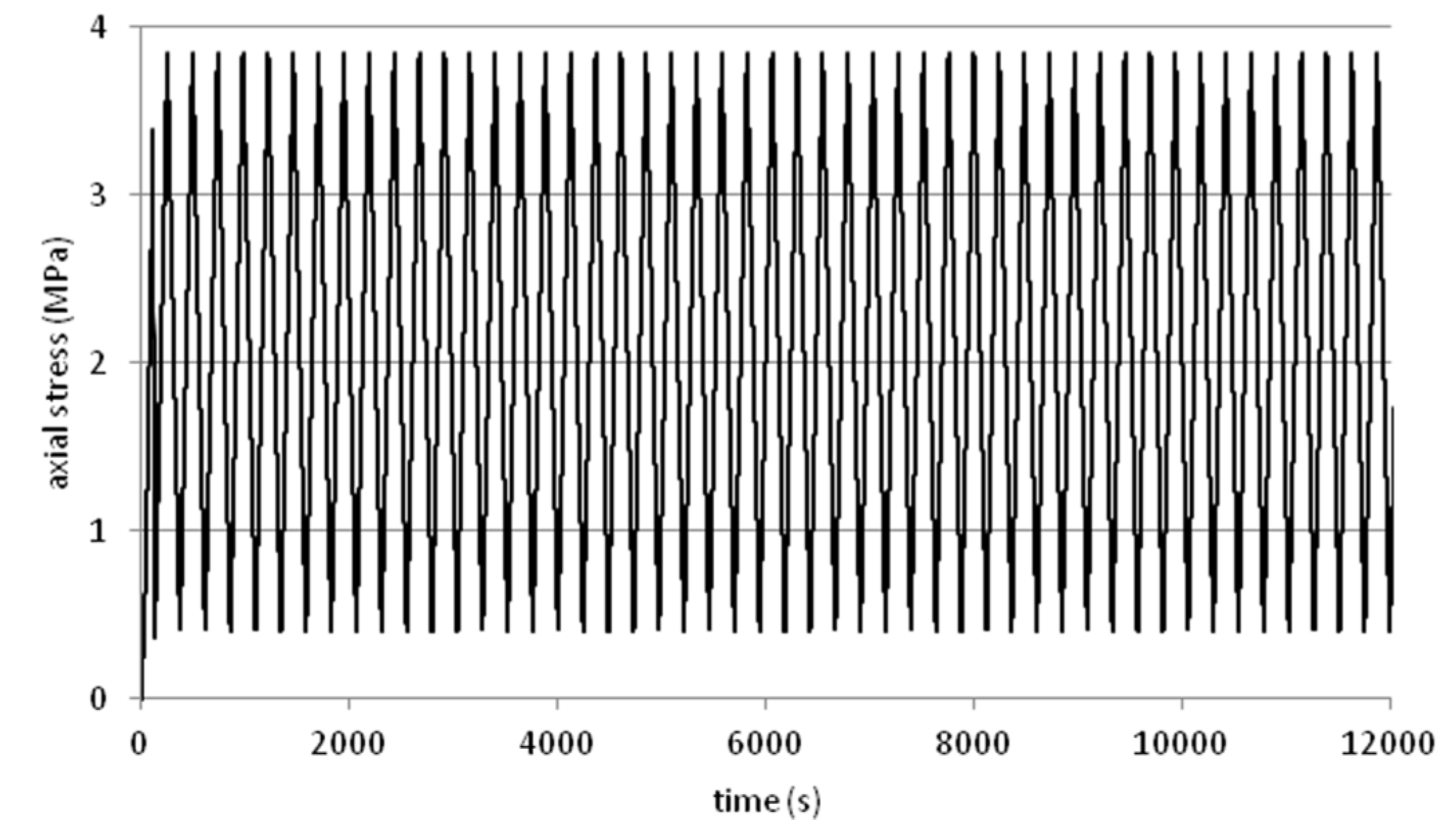
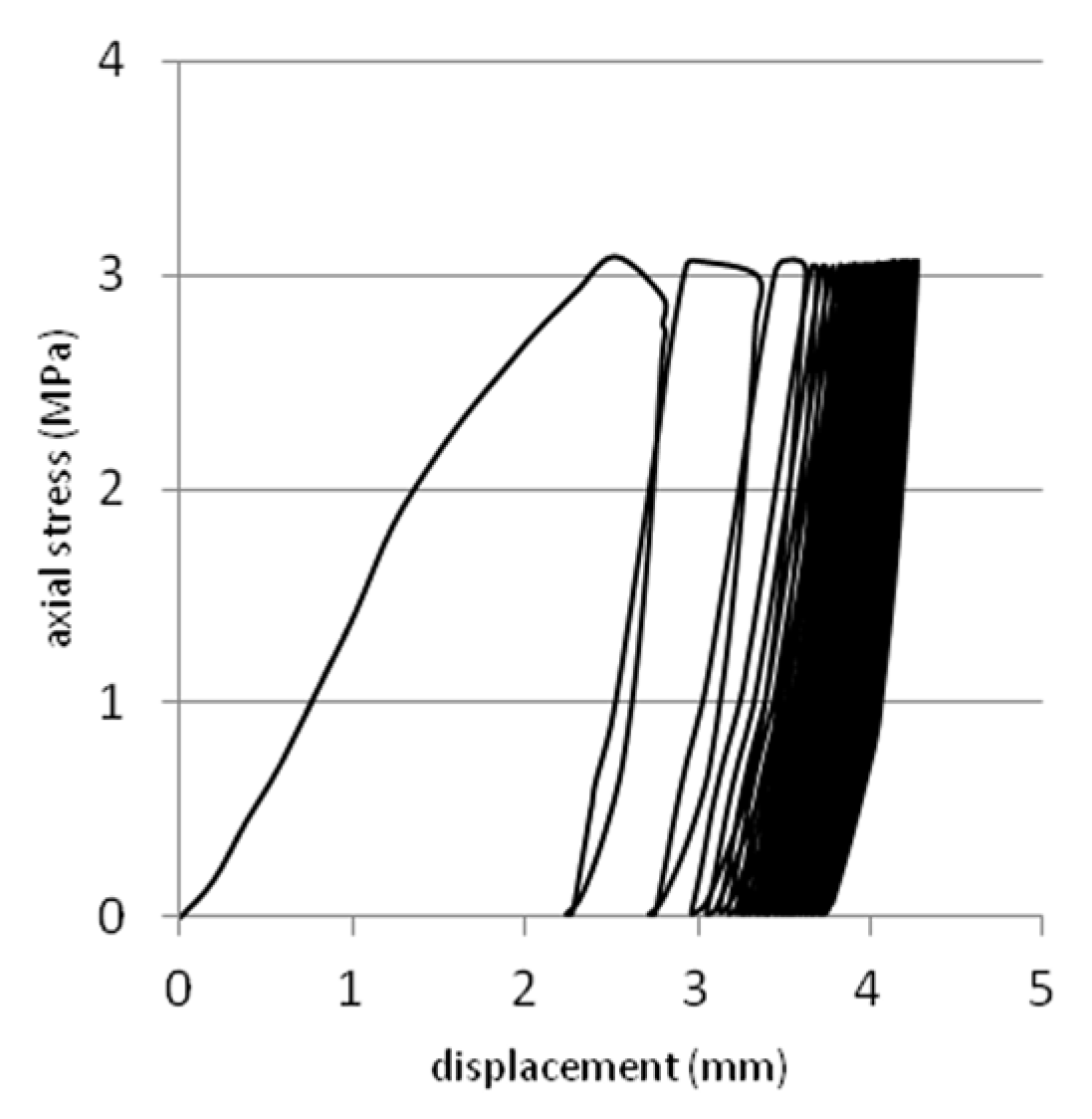
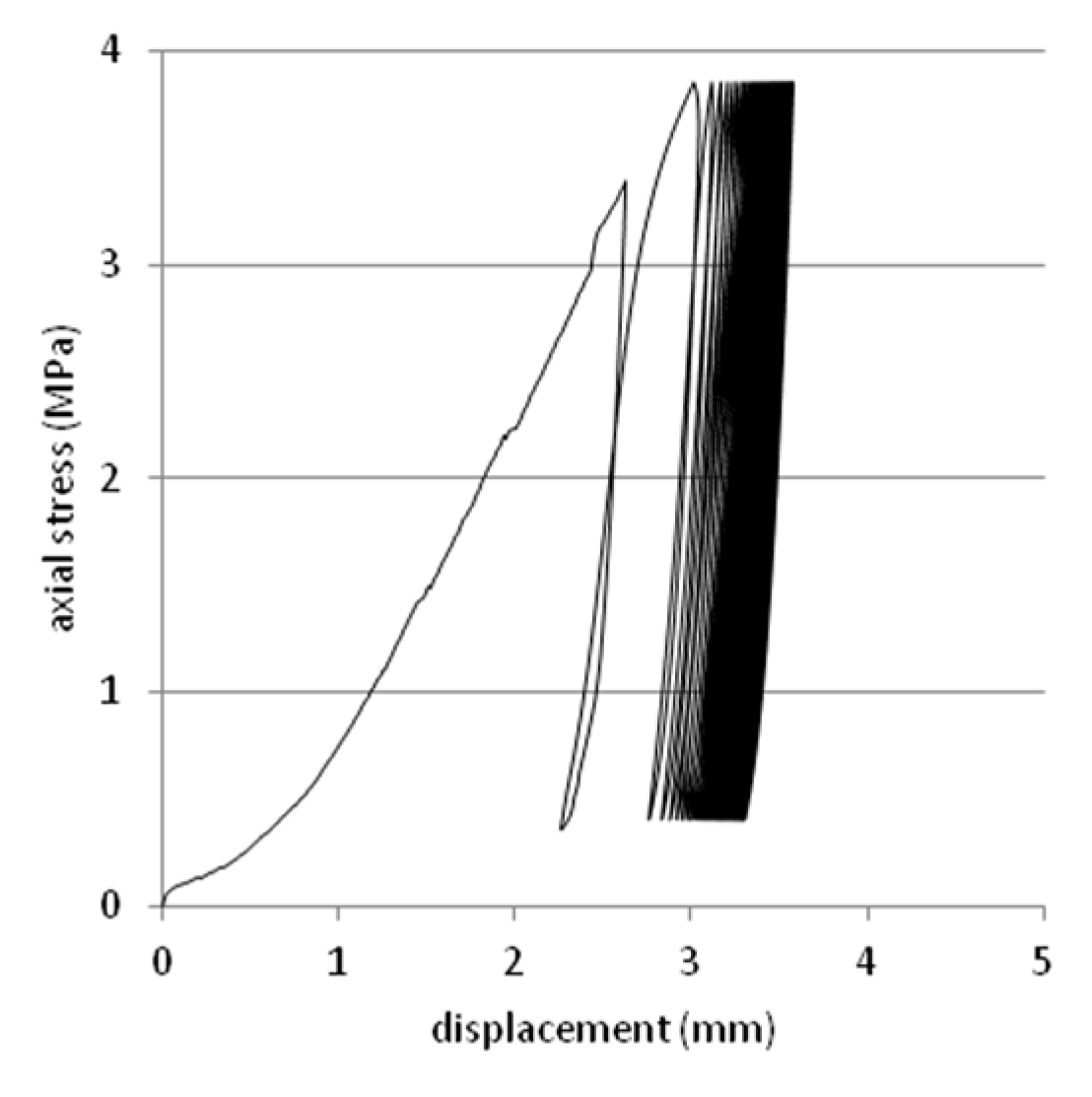
3.4. Field Tests
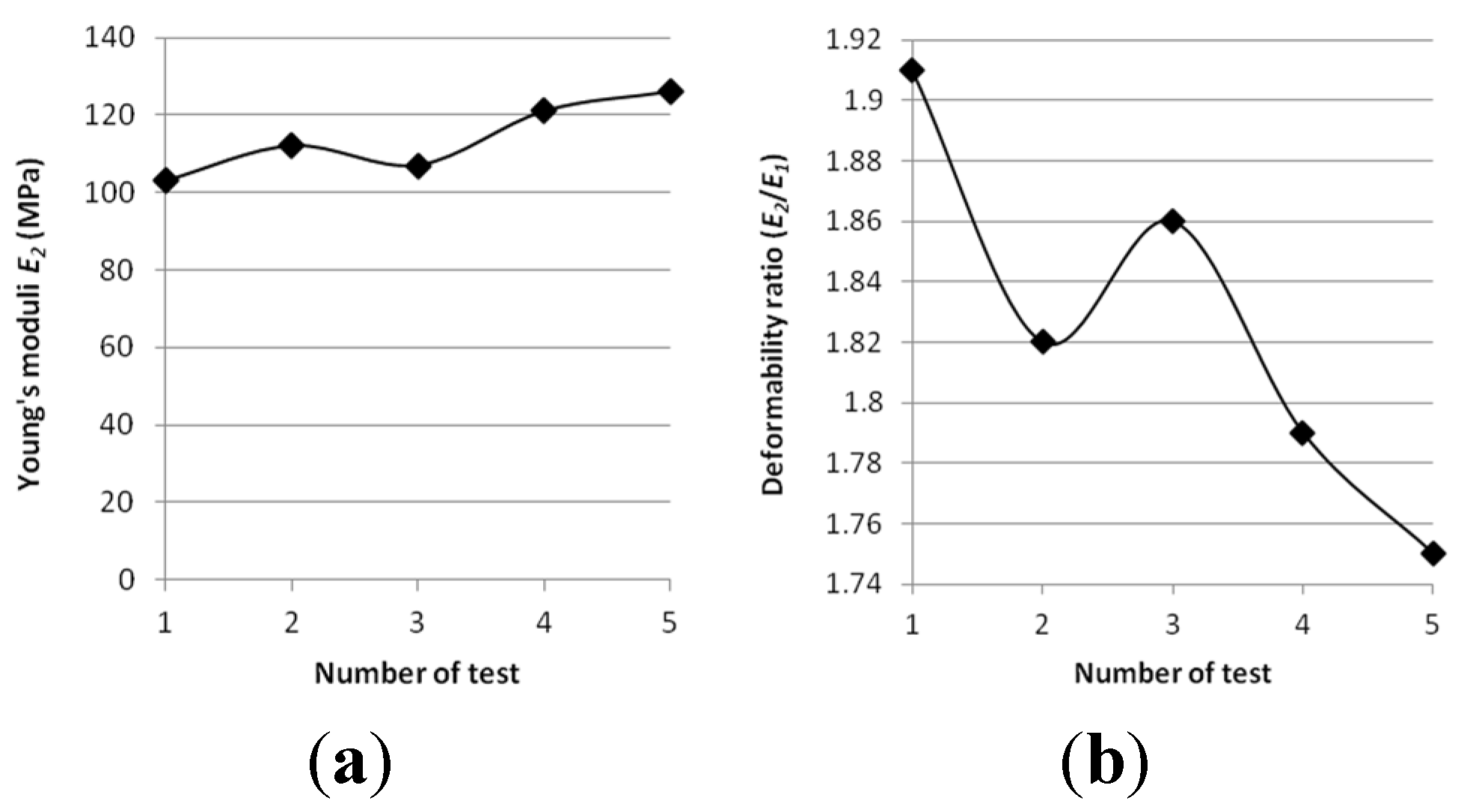
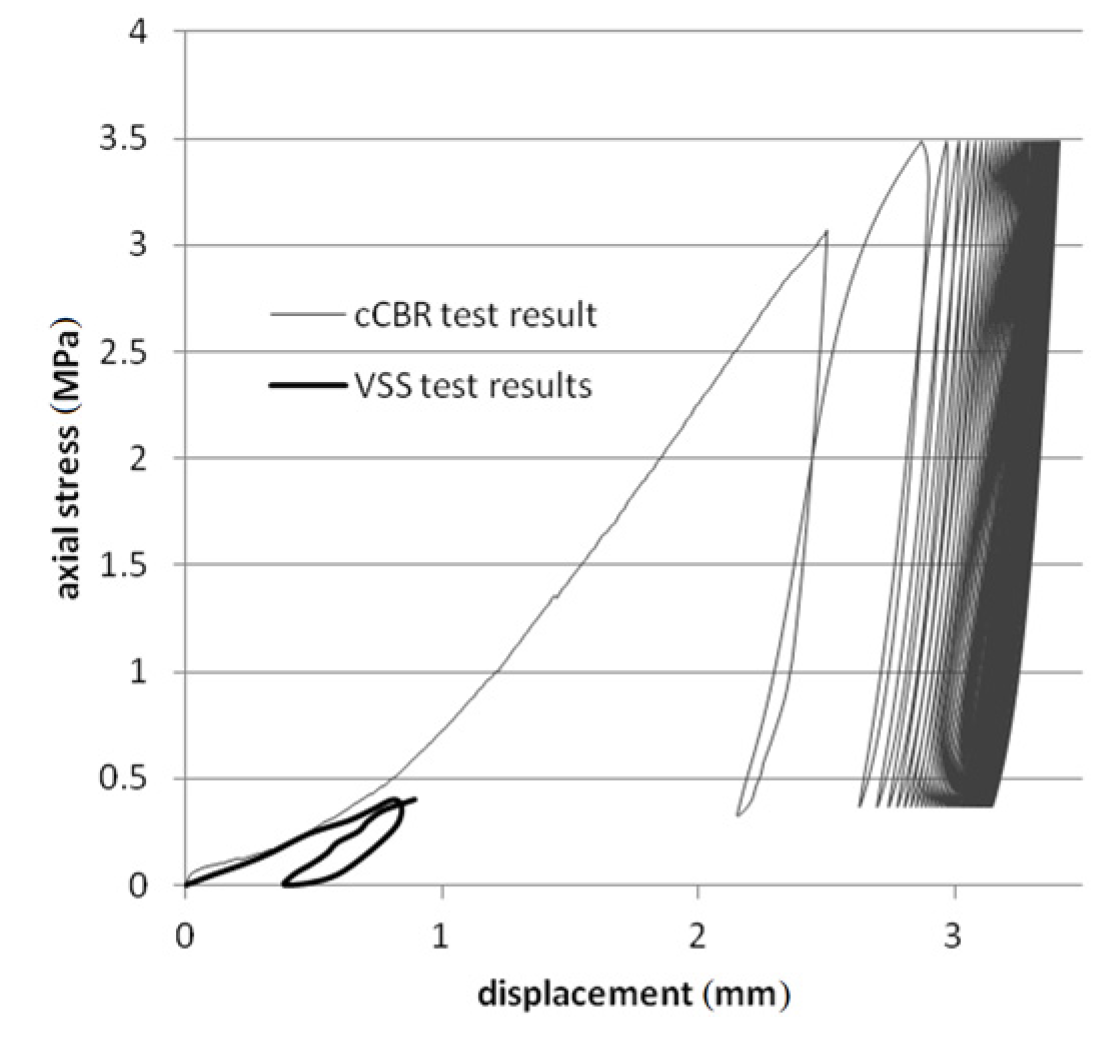
4. Conclusions
Author Contributions
Conflicts of Interest
References
- Faullman, A.M. Leaching of chromium and barium from steel slag in laboratory and field tests—a solubility controlled process? Waste Manag. 2000, 20, 149–154. [Google Scholar] [CrossRef]
- Furlani, E.; Tonello, G.; Maschio, S. Recycling of steel slag and glass cullet from energy saving lamps by fast firing production of ceramics. Waste Manag. 2010, 30, 1714–1719. [Google Scholar] [CrossRef] [PubMed]
- Shi, C.J.; Qian, J.S. High performance cementing materials from industrial stags—a review. Resour. Conserv. Recycl. 2000, 29, 195–207. [Google Scholar] [CrossRef]
- Motz, H.; Geiseler, J. Products of steel slags an opportunity to save natural resources. Waste Manag. 2001, 21, 285–293. [Google Scholar] [CrossRef]
- Baciocchi, R.; Costa, G.; Di Bartolomeo, E.; Polettini, A.; Pomi, R. The effects of accelerated carbonation on CO2 uptake and metal release from incineration APC residues. Waste Manag. 2009, 29, 2994–3003. [Google Scholar] [CrossRef] [PubMed]
- Zhang, H.W.; Hong, X. An overview for the utilization of wastes from stainless steel industries. Resour. Conserv. Recycl. 2011, 55, 745–754. [Google Scholar]
- Directive, W.F. Position paper on the status of ferrous slag. Regulation 2012. Available online: http://www.euroslag.com/fileadmin/_media/images/Status_of_slag/Position_Paper_April_2012.pdf (accessed on 8 July 2015). [Google Scholar]
- Shen, Y.N.; Huang, L.J.; Wang, H.Y.; Le, D.H. Experimental study and strength formulation of soil-based controlled low-strength material containing stainless steel reducing slag. Constr. Build. Mater. 2014, 54, 1–9. [Google Scholar] [CrossRef]
- Sheen, Y.N.; Wang, H.Y.; Sun, T.H. A study of engineering properties of cement mortar with stainless steel oxidizing slag and reducing slag resource materials. Constr. Build. Mater. 2013, 40, 239–245. [Google Scholar] [CrossRef]
- Yildirim, I.Z.; Prezzi, M. Chemical, mineralogical, and morphological properties of steel slag. Adv. Civ. Eng. 2011, 201, 463638. [Google Scholar] [CrossRef]
- Polish Committee for Standardization. Mixtures of Unbound Materials–Requirements; PN-EN 13285:2004; Polish Committee for Standardization: Warsaw, Poland, 2004. [Google Scholar]
- Polish Committee for Standardization. Aggregates for Unbound and Hydraulically Bound Materials for Use in Building and Road Construction; PN-EN 13242:2004; Polish Committee for Standardization: Warsaw, Poland, 2004. [Google Scholar]
- American Concrete Institute. Controled-Low Strength Materials; ACI 229R-99; American Concrete Institute: Detroit, MI, USA, 2005. [Google Scholar]
- Achtemichuk, S.; Hubbard, J.; Sluce, R.; Shehata, M.H. The utilization of recycled concrete aggregate to produce controlled low-strength materials without using Portland cement. Cem. Concr. Compos. 2009, 31, 564–569. [Google Scholar] [CrossRef]
- Chen, Y.; Chen, Z.; Huang, J.; Xue, J.; Zhou, C. Mechanical properties of recycled pebble aggregate concrete. J. Build. Mater. 2014, 17, 465–469. (In Chinese) [Google Scholar]
- Sas, W.; Głuchowski, A.; Szymański, A. Impact of the stabilization of compacted cohesive soil–sandy clay on field criterion improvement. Ann. Wars. Univ. Life Sci. Land Reclam. 2014, 46, 139–151. [Google Scholar]
- Colangelo, F.; Cioffi, R. Use of cement klin dust, blast furnace slag and marble sluge in the manufacture of sustainable artificial aggregates by means of bonding pelletization. Materials 2013, 6, 3139–3159. [Google Scholar] [CrossRef]
- Wu, J.Y.; Lee, M.Z. Beneficial reuse of construction surplus clay in CLSM. Int. J. Pavement Res. Technol. 2011, 4, 293–300. [Google Scholar]
- Sas, W.; Głuchowski, A. Effects of stabilization with cement on mechanical properties of cohesive soil–sandy-silty clay. Int. J. Pavement Res. Technol. 2013, 45, 193–205. [Google Scholar]
- Wang, H.Y.; Chen, B.T.; Wu, Y.W. A study of the fresh properties of controlled low-strength rubber lightweight aggregate concrete (CLSRLC). Constr. Build. Mater. 2013, 41, 526–531. [Google Scholar] [CrossRef]
- Ivana, S.D.; Barišić, I.N.; Dimter, S. Possibilities of application of slag in road construction. Tech. Gaz. 2010, 17, 523–528. [Google Scholar]
- Dunster, A.M. The use of blastfurnace slag and steel slag as aggregates. In Proceedings of the 4th European Symposium on Performance of Bituminous and Hydraulic Materials in Pavements, Nottingham, UK, 11–12 April 2002; pp. 257–260.
- Hwang, E.H.; Koa, Y.S.; Kim, J.M.; Hwang, T.S. Mechanical/physical characteristics of polymer mortar recycled from rapid-chilled steel slag. J. Ind. Eng. Chem. 2009, 15, 628–634. [Google Scholar] [CrossRef]
- Kriskova, L.; Pontikes, Y.; Cizer, Ö.; Mertens, G.; Veulemans, W.; Geysen, D.; Jones, P.T.; Vandewalle, L.; Van Balen, K.; Blanpain, B. Effect of mechanical activation on the hydraulic properties of stainless steel slags. Cem. Concr. Res. 2012, 42, 778–788. [Google Scholar] [CrossRef]
- Pellegrino, C.; Cavagnis, P.; Faleschini, F.; Brunelli, K. Properties of concretes with black/oxidizing electric arc furnace slag aggregate. Cem. Concr. Compos. 2013, 37, 232–240. [Google Scholar] [CrossRef]
- Adolfsson, D.; Robinson, R.; Engström, F.; Björkman, B. Influence of mineralogy on the hydraulic properties of ladle slag. Cem. Concr. Res. 2011, 41, 865–871. [Google Scholar] [CrossRef]
- Pasetto, M.; Baldo, N. Experimental analysis of hydraulically bound mixtures made with waste foundry sand and steel slag. Mater. Struct. 2014. [Google Scholar] [CrossRef]
- Liu, S.J.; Hu, Q.Q.; Zhao, F.Q.; Chu, X.M. Utilization of steel slag, iron tailings and fly ash as aggregates to prepare a polymer-modified waterproof mortar with a core–shell styrene–acrylic copolymer as the modifier. Constr. Build. Mater. 2014, 72, 15–22. [Google Scholar] [CrossRef]
- Katz, A.; Klover, K. Utilization of industrial by-products for the production of controlled low-strength materials (CLSM). Waste Manag. 2004, 24, 501–512. [Google Scholar] [CrossRef]
- Pasetto, M.; Baldo, N. Cement bound mixtures with metallurgical slags for road constructions: Mix design and mechanical characterization. IM Inż. Miner. 2013, 14, 15–20. [Google Scholar]
- Sakai, S.I.; Hiraoka, M. Municipal solid waste incinerator residua recycling by thermal processes. Waste Manag. 2000, 20, 249–258. [Google Scholar]
- Zhang, W.S.; Shi, D.; Shao, Z.J.; Ye, J.Y.; Wang, Y. The properties of steel slag bricks prepared by both alkali activation and accelerated carbonation. Key Eng. Mater. 2012, 509, 113–118. [Google Scholar] [CrossRef]
- Wang, G.; Wang, Y.; Gao, Z. Use of steel slag as a granular material: Volume expansion prediction and useability criteria. J. Hazard. Mater. 2010, 184, 555–560. [Google Scholar] [CrossRef] [PubMed]
- Kourounis, S.; Tsivilis, S.; Tsakiridis, P.E.; Papadimitriou, G.D.; Tsibouki, Z. Properties and hydration of blended cements with steelmaking slag. Cem. Concr. Res. 2007, 37, 815–822. [Google Scholar] [CrossRef]
- Setién, J.; Hernández, D.; González, J.J. Characterization of ladle furnace basic slag for use as a construction material. Constr. Build. Mater. 2009, 23, 1788–1794. [Google Scholar] [CrossRef]
- WT-4. Unbound mixtures for national roads. Available online: http://www.gddkia.gov.pl/userfiles/articles/d/Dokumenty_techniczne/WT4.pdf. (In Polish)
- Zhao, W.; Fan, C. Discussion about technical problems in CBR test. Appl. Mech. Mater. 2014, 587–589, 1286–1290. [Google Scholar] [CrossRef]
- Giummarra, G. Road Classifications, Geometric Designs and Maintenance Standards for Low Volume Roads; ARRB Transport Research Ltd.: Vermont South, VIC, Australia, 2001. [Google Scholar]
- Polish Committee for Standardization. Motor roads. Earthworks. Requirements and Tests; PN-EN 13242:2004; Polish Committee for Standardization: Warsaw, Poland, 1988. (In Polish) [Google Scholar]
- American Society for Testing Materials. Standard Test Method for CBR (California Bearing Ratio) of Laboratory-Compacted Soils; ASTM D1883-87; ASTM International: West Conshohocken, PA, USA, 1987. [Google Scholar]
- Sas, W.; Głuchowski, A.; Szymański, A. Determination of the resilient modulus MR for lime stabilized Clay obtained from repeated loading CBR tests. Ann. Wars. Univ. Life Sci. Land Reclam. 2012, 44, 143–153. [Google Scholar] [CrossRef]
- Sas, W.; Głuchowski, A. Methods of determination of the modulus of elasticity (E and Mr) from the repeated loading tests CBR. Sci. Rev. Eng. Env. Sci. 2012, 57, 171–181. [Google Scholar]
- Kumar, S.; Kumar, R.; Bandopadhyay, A. Innovative methodologies for the utilization of wastes from metallurgical and allied industries. Resour. Conserv. Recycl. 2006, 48, 301–314. [Google Scholar] [CrossRef]
- Kumar, D.S.; Umadevi, T.; Paliwal, H.K.; Prasad, G.; Mahapatra, P.C.; Ranjan, M. Recycling steelmaking slags in cement. Worldcement 2010, 11, 1–6. [Google Scholar]
- Das, B.; Mohanty, J.K.; Reddy, P.S.R.; Ansari, M.I. Characterization and beneficiation studies of charge chrome slag. Scand. J. Metall. 1997, 26, 153–157. [Google Scholar]
- Chazarenc, F.; Filiatrault, M.; Brisson, J.; Comeau, Y. Combination of slag, limestone and sedimentary apatite in columns for phosphorus removal from sludge fish farm effluents. Water 2010, 2, 500–509. [Google Scholar] [CrossRef]
- Piatak, N.M.; Seal, R.R., II. Mineralogy and the release of trace elements from slag from the Hegeler Zinc smelter, Illinois (USA). Appl. Geochem. 2010, 25, 302–320. [Google Scholar] [CrossRef]
- Puziewicz, J.; Zainoun, K.; Bril, H. Primary phases in pyrometallurgical slags from a zinc-smelting waste dump, Świętochłowice, Upper Silesia, Poland. Can. Mineral. 2007, 45, 1189–1200. [Google Scholar] [CrossRef]
- Proctor, D.M.; Fehling, K.A.; Shay, E.C.; Wittenborn, J.L.; Green, J.J.; Avent, C.; Bigham, R.D.; Connolly, M.; Lee, B.; Shepker, T.O.; Zak, M.A. Physical and chemical characteristics of blast furnace, basic oxygen furnace, and electric arc furnace steel industry slags. Env. Sci. Technol. 2000, 34, 1576–1582. [Google Scholar] [CrossRef]
- Geiseler, J. Use of steelworks slag in Europe. Waste Manag. 1996, 16, 59–63. [Google Scholar] [CrossRef]
- Mombelli, D.; Mapelli, C.; Barella, S.; Gruttadauria, A.; Le Saout, G.; Garcia-Diaz, E. The efficiency of quartz addition on electric arc furnace (EAF) carbon steel slag stability. J. Hazard. Mater. 2014, 279, 586–596. [Google Scholar] [CrossRef] [PubMed]
- Lottermoser, B.G. Evaporative mineral precipitates from the historical smelting slag dump, Río Tinto, Spain. Neues Jahrb. Miner. Abh. J. Miner. Geochem. 2005, 181, 183–190. [Google Scholar] [CrossRef]
- Hill, A. Understanding the leaching behaviour of slags, testing and interpretation. In Proceeding of the 3th European Slag Conference—Manufacturing and Processing of Iron and Steel Slags, Keyworth, UK, 16–18 October 2002.
- Ansari, A.; Mehrabian, M.A.; Hashemipour, H. Zinc ion adsorption on carbon nanotubes in an aqueous solution. Pol. J. Chem. Technol. 2012, 14, 29–37. [Google Scholar]
- Thamilarasu, P.; Kumar, G.; Tamilarasan, R.; Sivakumar, V.; Karunakaran, K. Kinetic, equilibrium and thermodynamic studies on the removal of Cr(VI) by activated carbon prepared from Cajanus Cajan (L) Milsp seed Shell. Pol. J. Chem. Technol. 2011, 13, 1–7. [Google Scholar] [CrossRef]
- Araya, A.A. Characterization of Unbound Granular Materials for Pavements. Ph.D. Thesis, Technical University Delft, Delft, The Netherlands, March 2011. [Google Scholar]
- Hainin, M.R.; Yusoff, N.I.M.; Mohammad Sabri, M.F.; Abdul Aziz, M.A.; Sahul Hameed, M.A.; Farooq Reshi, W. Steel slag an aggregate replacement in malaysian hot mix asphalt. ISRN Civ. Eng. 2012, 459016. [Google Scholar] [CrossRef]
- BSI Standards Publication. Unbound and Hydraulically Bound Mixtures. Cyclic Load Triaxial Test for Unbound Mixtures; BS EN 13286-7:2004; British Standards Institute: London, UK, 2004. [Google Scholar]
© 2015 by the authors; licensee MDPI, Basel, Switzerland. This article is an open access article distributed under the terms and conditions of the Creative Commons Attribution license (http://creativecommons.org/licenses/by/4.0/).
Share and Cite
Sas, W.; Głuchowski, A.; Radziemska, M.; Dzięcioł, J.; Szymański, A. Environmental and Geotechnical Assessment of the Steel Slags as a Material for Road Structure. Materials 2015, 8, 4857-4875. https://doi.org/10.3390/ma8084857
Sas W, Głuchowski A, Radziemska M, Dzięcioł J, Szymański A. Environmental and Geotechnical Assessment of the Steel Slags as a Material for Road Structure. Materials. 2015; 8(8):4857-4875. https://doi.org/10.3390/ma8084857
Chicago/Turabian StyleSas, Wojciech, Andrzej Głuchowski, Maja Radziemska, Justyna Dzięcioł, and Alojzy Szymański. 2015. "Environmental and Geotechnical Assessment of the Steel Slags as a Material for Road Structure" Materials 8, no. 8: 4857-4875. https://doi.org/10.3390/ma8084857







